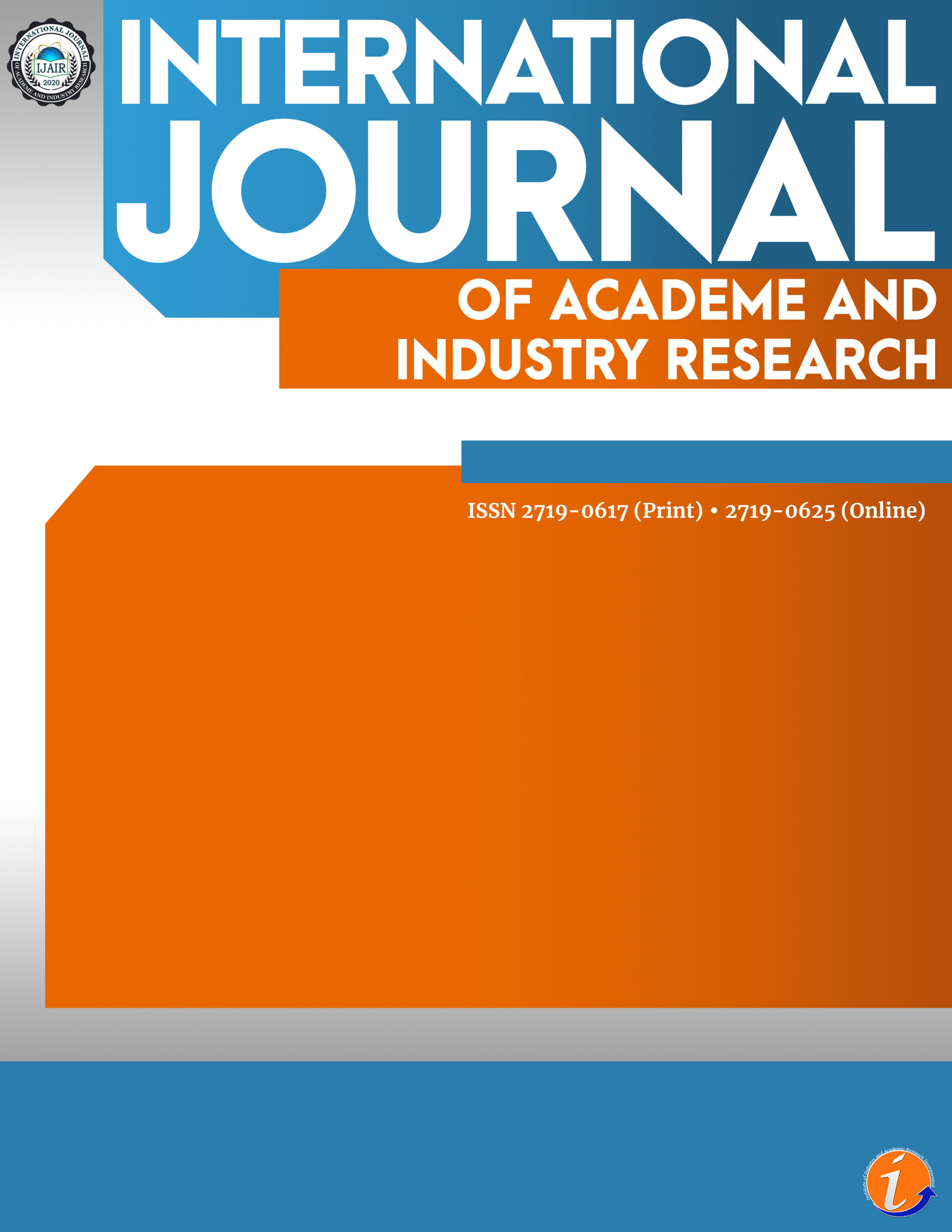This study examines the influence of leverage, profitability, and profit growth on tax avoidance, with firm size as a moderating variable. Using a quantitative approach, the research analyzes sixteen health sector companies listed on the Indonesia Stock Exchange (IDX) during the period 2019–2023. The data were analyzed using Partial Least Squares Structural Equation Modeling (PLS-SEM). The findings indicate that leverage and profit growth do not significantly affect tax avoidance, while profitability has a positive and significant effect. Furthermore, firm size does not moderate the relationship between leverage, profitability, and profit growth on tax avoidance. These results highlight that internal financial indicators may influence tax avoidance behavior more directly than organizational scale. Beyond regulatory implications, the findings underscore the importance for firms to align financial performance with ethical tax practices, and for stakeholders to consider non-size-related factors when evaluating corporate tax behavior.
tax avoidance, leverage, profitability, growth ratio, firm size, health companies
Felicia Auryn. Corresponding author. Student at Department of Accounting, Faculty of Economics, Universitas Prima Indonesia, Medan, North Sumatra, Indonesia. Email : feliciaauryn1998@gmail.com.
Galumbang Hutagalung. Lecturer of Department of Accounting, Faculty of Economics, Universitas Prima Indonesia, Medan, North Sumatra, Indonesia. Email: galumbanghutagalung@unprimdn.ac.id.
Enda Noviyanti Simorangkir. Lecturer of Department of Accounting, Faculty of Economics, Universitas Prima Indonesia, Medan, North Sumatra, Indonesia. Email: endanoviyantisimorangkir@unprimdn.ac.id.
Sauh Hwee Teng. Lecturer of Department of Accounting, Faculty of Economics, Universitas Prima Indonesia, Medan, North Sumatra, Indonesia. Email: tengsauhhwee@unprimdn.ac.id.
"All authors equally contributed to the conception, design, preparation, data gathering and analysis, and writing of the manuscript. All authors read and approved the final manuscript."
No potential conflict of interest was reported by the author(s).
This work was not supported by any funding.
Not Applicable.
The author declares the use of Artificial Intelligence (AI) in writing this paper. In particular, the author used ChatGPT and Quillbot in paraphrasing and grammatical proficiency. The author takes full responsibility in ensuring proper review and editing of contents generated using AI.
Anthony, R. N., & Govindarajan, V. (2011). Management control systems (12th ed.). McGraw-Hill/Irwin.
Apriatna, P., & Oktris, L. (2022). The effect of profitability, company size, and sales growth on tax avoidance with leverage as a moderating variable. International Journal of Innovative Science and Research Techonology 7(8). https://doi.org/10.5281/zenodo.7017881
Cynthia, G., Rasinta, M., Ginting, R., & Simorangkir, E. N. (2023). The profitability, leverage, and sales growth on tax avoidance through company size as moderating variable on manufacturing companies in sector of consumer goods listed on the Indonesia Stock Exchange 2019-2021. International Journal of Social Science Research and Review 6(5) 141-150 https://doi.org/10.47814/ijssrr.v6i5.1247
Effendi, A. S., & Trisnawati, R. (2023). The effect of profitability, firm size, and leverage on tax avoidance with institutional ownership as moderating variable. In International Journal of Latest Research in Humanities and Social Science. http://www.ijlrhss.com/vol6-iss4.html
Fahmi, I. (2020). Analisis kinerja keuangan (Edisi ke-4). Alfabeta.
Firmanzah, A., & Marsoem, B. S. (2023). The effect of profitability, leverage, firm size, and related party transactions on tax avoidance with earnings management as a moderating variable. Journal of Economics, Finance and Management Studies, 06(01). https://doi.org/10.47191/jefms/v6-i1-29
Ghozali, I., & Latan, H. (2020). Partial least square konsep, teknik dan aplikasi menggunakan program SmartPLS 3.0. Edisi 2. (2nd ed.). Badan penerbit- Undip.
Hery. (2020). Akutansi keuangan menengah , Sesuai PSAK dan IFRS. PT Grasindo.
Hoppe, T., Schanz, D., Sturm, S., & Sureth-Sloane, C. (2021). The Tax Complexity Index – A Survey-Based Country Measure of Tax Code and Framework Complexity. European Accounting Review, 32(2), 239–273. https://doi.org/10.1080/09638180.2021.1951316
Ichwan, & Riana, M. A. (2023). Pengaruh profitabilitas, leverage, dan pertumbuhan penjualan terhadap penghindaran pajak pada perusahaan manufaktur sub sektor makanan Dan minuman yang terdaftar di Bursa Efek Indonesia periode 2020-2022. Jurnal Mirai Management 8(3), 324–336. https://doi.org/10.37531/mirai.v8i3.6134
Jensen, M. C., & Meckling, W. H. (1976). Theory of the firm: Managerial behavior, agency costs and ownership structure. Journal of Financial Economics, 3(4), 305–360. https://doi.org/10.1016/0304-405X(76)90026-X
Khomsiyah, N., Muttaqiin, N., & Katias, P. (2021). Pengaruh profitabilitas tata Kelola perusahaan, leverage, ukuran perusahaan dan pertumbuhan penjualan terhadap penghindaran pajak pada perusahaan pertambangan yang terdaftar di Bursa Efek Indonesia periode 2014 – 2018. University of Nahdlatul Ulama Surabaya 4(1) https://doi.org/10.51804/econ12.v4i1.917
Nguyen, M., & Nguyen, J. H. (2019). Economic policy uncertainty and firm tax avoidance. Accounting & Finance, 60(4), 3935–3978. https://doi.org/10.1111/acfi.12538
Putty, V. A. F., & Badjuri, A. (2023). Faktor yang berpengaruh terhadap penghindaran pajak dengan ukuran perusahaan sebagai moderasi. Jurnal Ilmiah Manajemen, Ekonomi dan Akuntansi. https://doi.org/10.31955/mea.v7i2.3134
Rahayu, S. (2020). Perpajakan konsep, sistem dan implementasi. Edisi Revisi. Bandung. Penerbit Rekayasa Sains.
Rani, S., Zuliyana, M., & Effendi, R. (2023). The effect of profitability and leverage on tax avoidance moderated by firm size: Evidence from property and real estate companies in Indonesia. Finance, Accounting and Business Analysis, 5, 2023.
Safitri, R. S., & Oktris, L. (2023). The effect of institutional ownership, leverage, and liquidity on tax avoidance with company size as a moderating variable. Saudi Journal of Economics and Finance, 7(04), 220–231. https://doi.org/10.36348/sjef.2023.v07i04.003
Saptono, P. B., Mahmud, G., Salleh, F., Pratiwi, I., Purwanto, D., & Khozen, I. (2024). Tax Complexity and Firm Tax Evasion: A Cross-Country Investigation. Economies, 12(5), 97. https://doi.org/10.3390/economies12050097
Sartono, A. (2015 ). Manajemen keuangan teori dan aplikasi, Edisi Empat, Yogyakarta Sawitri, A. P., Alam, W. Y., & Dewi, F. A. A. (2022). Pengaruh profitabilitas pertumbuhan penjualan, ukuran perusahaan dan koneksi politik terhadap penghindaran pajak. Jurnal Riset Akuntansi Mercu Buana. 8 https://doi.org/10.26486/jramb.v8i1.2365
Sriyono, & Andesto, R. (2022). The effect of profitability, leverage and sales growth on tax avoidance with the size of the company as a moderation variable. Dinasti International Journal of Management Science 4(1). https://doi.org/10.31933/dijms.v4i1
Stephanie, & Herijawati, E. (2022). Pengaruh pertumbuhan penjualan, profitabilitas, dan intensitas aset tetap terhadap penghindaran pajak. Eco-buss : Economy and Bussines 5(1) https://doi.org/10.32877/eb.v5i1.377
Sujarweni, W. (2022). Analisis laporan keuangan , teori , aplikasi & hasil penelitian. Pustaka baru press
Sukamulja, S. (2019). Analisis laporan keuangan sebagai dasar pengambilan Keputusan investasi, Andi offset
Vidyasari, S. A. M. R. (2021). Pengaruh struktur modal, pertumbuhan penjualan, ukuran perusahaan, likuiditas dan perputaran modal kerja terhadap profitabilitas. Kumpulan Hasil Riset Mahasiswa Akuntansi 3(1), 94-105.
Widadi, F. A., Subroto, B., & Rahman, A. F. (2022). Tax avoidance mediated by constitutional ownership as moderating variables. ETIKONOMI: Jurnal Ekonomi, 21(2), 411–430. https://doi.org/10.15408/etk.v21i2.25799
Cite this article:
Auryn, F., Hutagalung, G., Simorangkir, E.N. & Teng, S.H. (2025). The moderating role of firm size in the relationship between financial performance and tax avoidance. International Journal of Academe and Industry Research, 6(2), 171-190. https://doi.org/10.53378/ijair.353192
License:
![]()
This work is licensed under a Creative Commons Attribution (CC BY 4.0) International License.










